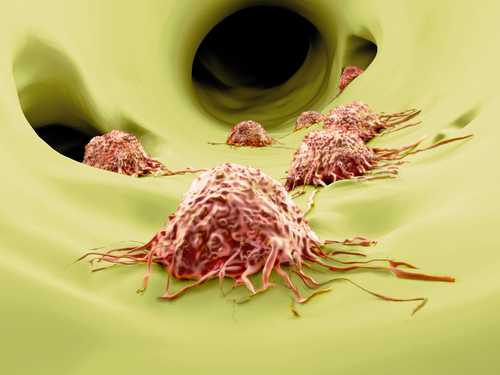Researchers at the Penn State College of Medicine developed a novel drug to fight melanoma called CelePlum-777, a set of nanoparticles loaded with the anticancer drugs celecoxib and plumbagin, and that effectively kills cancer cells.
Results of this work were published under the title “Nanoparticle-Based Celecoxib and Plumbagin for the Synergistic Treatment of Melanoma” in the journal Molecular Cancer Therapeutics.
The use of multiple drugs to fight off cancer cells can delay the development of drug resistance, but this approach is limited by the toxicity induced by combined agents and the difficulty in delivering a specific amount of medicine to a specific location while leaving normal cells unharmed.
CelePlum-777 carries a combination of the anti-inflammatory agent celecoxib and the toxin plumbagin, two drugs that kill melanoma cells when used in a specific amount. When this combination is targeted at cancer cells, they have much more difficulty surviving.
The CelePlum-777 nanoparticles are hundreds of times smaller than a hair, but can be loaded with medication. After intravenous injection, they accumulate inside cancer cells and release the drugs directly into them. This targeted delivery decreases the toxicity that is usually associated with an anti-cancer treatment.
“Loading multiple drugs into nanoparticles is one innovative approach to deliver multiple cancer drugs to a particular site where they need to act and have them released at that optimal cancer cell killing ratio,” Raghavendra Gowda, the study’s first author, said in a news release. “Another advantage is that by combining the drugs, lower concentrations of each that are more effective and less toxic can be used.”
Researchers tested CelePlum-777 in lab-grown cancer cells and in mice with tumors. Results showed that CelePlum-777 prevented cancer growth in mice with no visible toxic effects and blocked proteins associated with tumor development.
“This drug is the first of a new class, loaded with multiple agents to more effectively kill melanoma cells, that has potential to reduce the possibility of resistance development,” said Gavin Robertson, the study’s senior author. “There is no drug like it in the clinic today and it is likely that the next breakthrough in melanoma treatment will come from a drug like this one.”
More studies are warranted to validate CelePlum-777 as a potential anticancer tool before testing it in patients. The development of CelePlum-777 was patented by Penn State and licensed to Cipher Pharmaceuticals.


